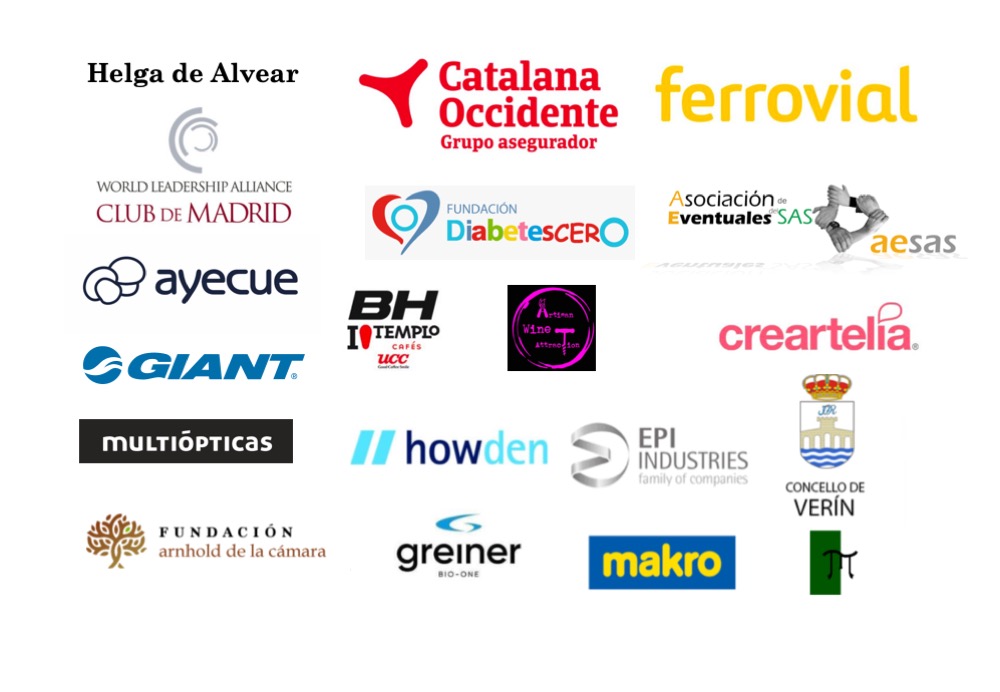The Spanish National Centre for Biotechnology is a multidisciplinary research center with a long-standing experience in molecular and structural virology and immunology. To offer responses to the current COVID19 pandemic, CNB-CSIC has undertaken a series os collaborative and interdisciplinary studies that exploit synergies between research groups and scientific services.
Our lines of action comprise more than fifteen projects led by researchers from the centre. These projects are included in the CSIC Global Health Platform, a large inititive that involves over 200 research groups approaching the scientific challenges caused by COVID-19 pandemic to provide short, medium and long-term solutions.
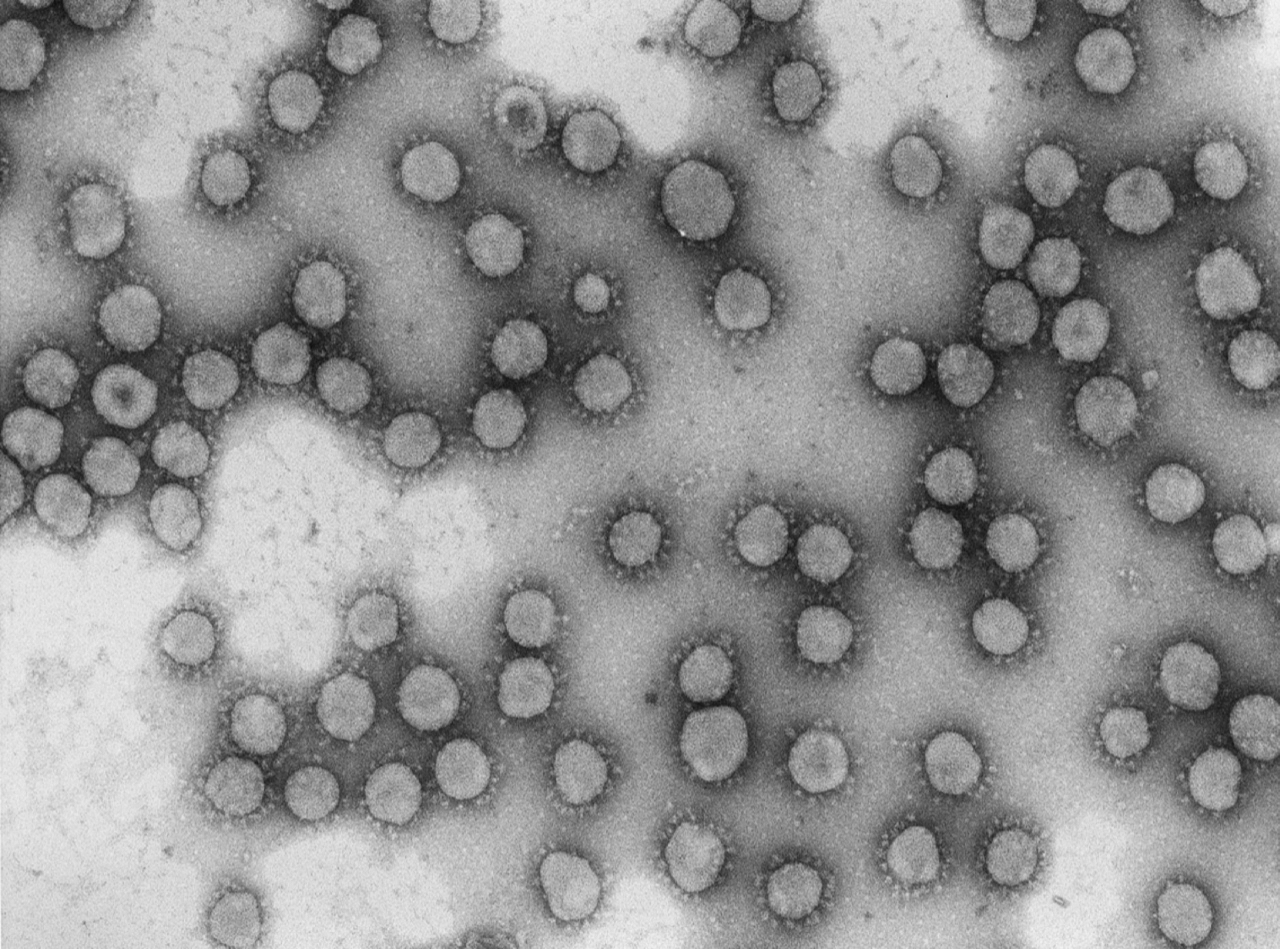 Development of a SARS-CoV2 vaccine based in non-infective replicons
Development of a SARS-CoV2 vaccine based in non-infective replicons
Researchers: Luis Enjuanes, Isabel Sola, Sonia Zuñiga
The aim of this project is to generate the SARS-CoV-2 virus in the laboratory by assembling synthetic DNA fragments and removing the genes responsible for virulence from its genome with reverse genetics techniques to introduce attenuating mutations and obtain non-infective and highly immunogenic derivatives as SARS-CoV-2 vaccine candidates. In parallel, animal models (transgenic mice) are being developed for the validation of vaccines and other therapeutic agents against COVID-19.
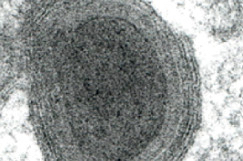 Development of a SARS-CoV2 vaccine based in a non-replicative MVA vector containing specific viral antigens
Development of a SARS-CoV2 vaccine based in a non-replicative MVA vector containing specific viral antigens
Researchers: Mariano Esteban, Juan García Arriaza, Carmen E. Gómez
The aim is to generate viral vectors based on a modification of the Vaccinia virus (called MVA) containing some of the proteins on the surface of the virus that are relevant to the infection. Because of its proven high attenuation, as MVA recombinants have been tested in numerous clinical trials and the MVA vector has been licensed by the FDA and EMA regulatory agencies as a smallpox vaccine, the MVA-COVID-19 vaccine would be safe and could be administered at all ages to all types of populations, including people with immune deficiencies. Two different vaccine candidates will be initially tested in pre-clinical studies in mice, and the best vaccine candidate will be ready to enter clinical studies in humans.
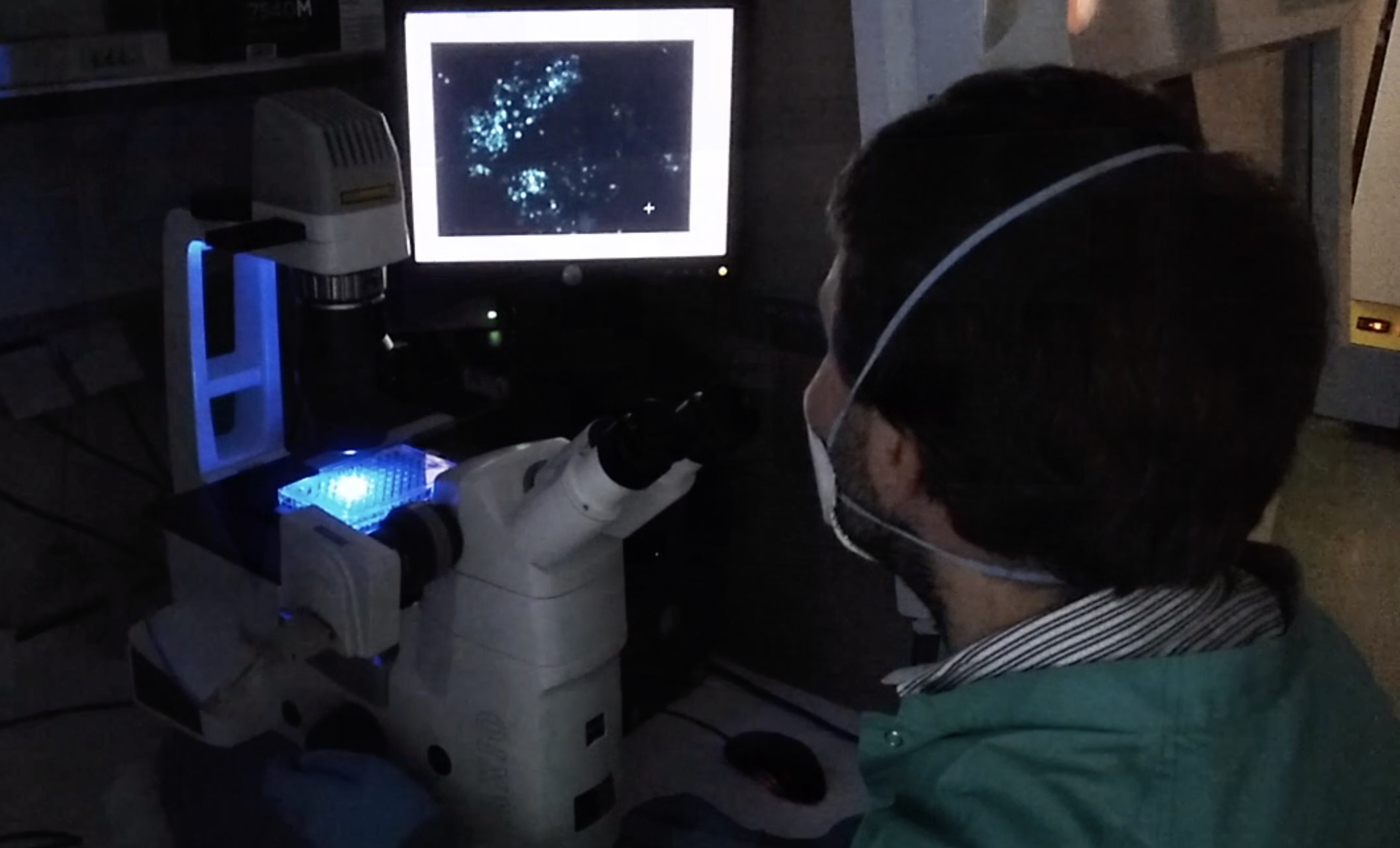 Identification and testing of antiviral compounds for the treatment of SARS-CoV2
Identification and testing of antiviral compounds for the treatment of SARS-CoV2
Researchers: Pablo Gastaminza, Urtzi Garaigorta
Platform for the massive screening of antiviral compounds, by means of two phases, one that is developed in the P2 laboratory with a model of the common cold coronavirus and another that is carried out in the P3 laboratory where the selected compounds are evaluated against SARS2. Repositioning drugs that are already in clinical use and would therefore be a quick way to find effective treatments in humans are being studied, as well as libraries of compounds, in collaboration with other projects led by CSIC groups, to identify new compounds and analyse their antiviral action mechanism. In collaboration with other projects led by CSIC groups, the screening of different collections of molecules is being carried out, which is making it possible to address both the repositioning of compounds for clinical use and the exploration of new antiviral compounds.
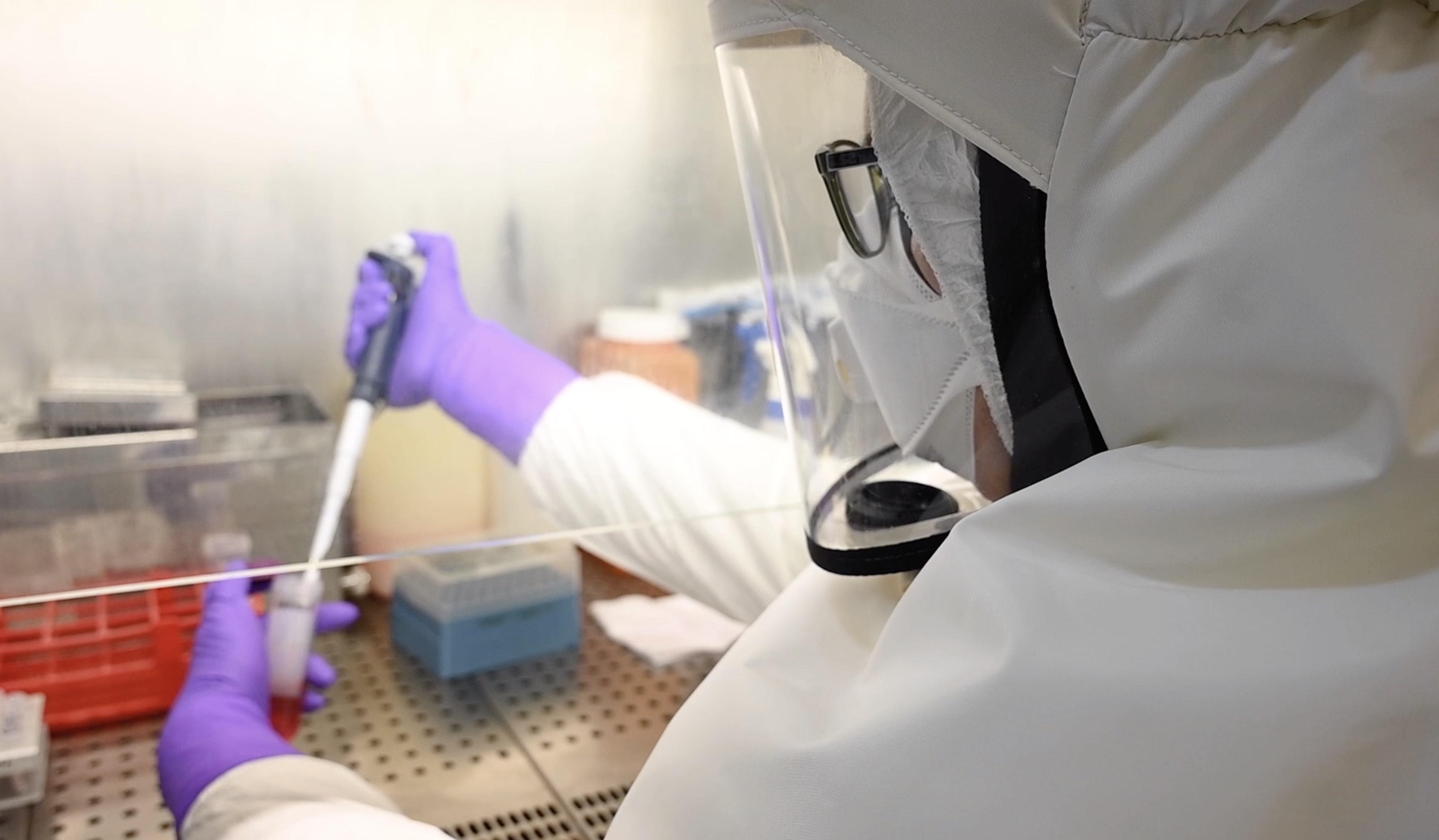 Preclinical validation of therapeutical agents for SARS-CoV2 treatment
Preclinical validation of therapeutical agents for SARS-CoV2 treatment
Researchers: Luis Enjuanes, Isabel Sola, Sonia Zuñiga, Leonor Kremer
This research group has different in vitro and in vivo models for the study of human coronavirus pathogenesis and is finalizing the development of specific models for SARS-CoV-2. These models will be used for preclinical validation of therapeutic compounds against SARS-CoV-2, including own developments and projects in collaboration with the Spanish pharmaceutical industry for drug repositioning and immunotherapy strategies.
 Computational models for the design of therapeutic interventions against SARS-CoV-2
Computational models for the design of therapeutic interventions against SARS-CoV-2
Researchers: José Ramón Valverde, Luis Enjuanes, J. Manuel Honrubia
This line of action applies computational methods to several key aspects of SARS-CoV-2 research, including the modelling of mechanisms by which the virus could trigger the different symptoms of COVID-19, the analysis of antibody interaction with SARS-CoV-2 for the design of neutralising antibodies, as well as in silico studies of the dynamics of interaction between surface proteins of the virus and its receptor in order to generate a humanised mouse model for pre-clinical studies.
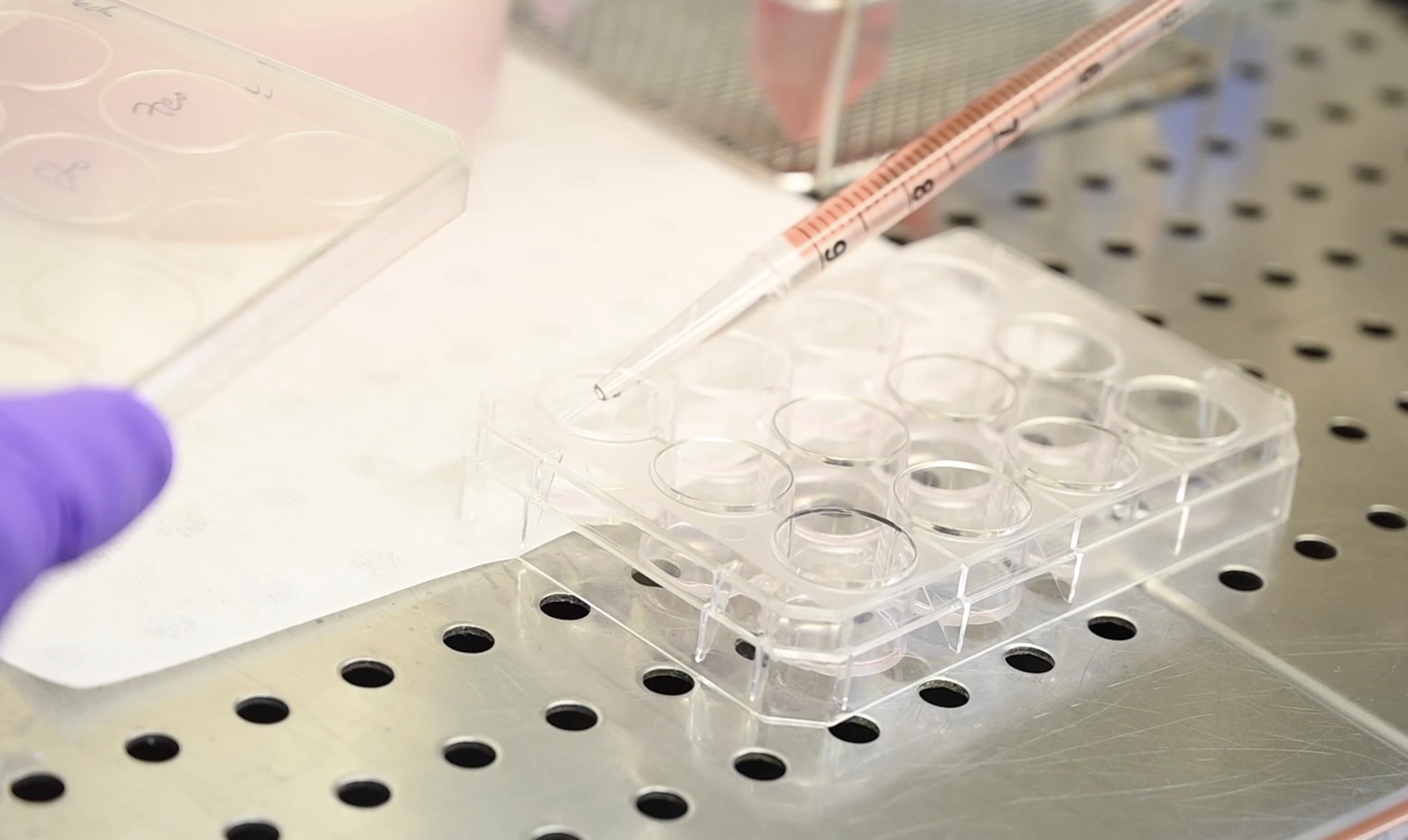 Development of nanobodies against SARS-CoV2
Development of nanobodies against SARS-CoV2
Researchers: Luis Ángel Fernández, José María Casasnovas, Víctor de Lorenzo
The aim of this line of action is to obtain neutralising antibodies against SARS-CoV-2, using the technology of generating single domain antibodies with a human VH region and a camelid VHH domain (nanobodies) in bacteria, starting from available nanobody libraries, libraries that are being generated by dromedary immunisation with SARS-CoV-2 antigens, human antibody collections, or by synthesis and mutagenesis of neutralising antibodies.
 Design of immunosuppresive nanoparticles to fight the “cytokines storm” that causes lung immunopathology
Design of immunosuppresive nanoparticles to fight the “cytokines storm” that causes lung immunopathology
Researcher: Domingo F. Barber
Design of nanoparticles that can be used to reduce the inflammation that occurs, especially in the lungs, when infected with SARS-CoV-2. The project will make it possible to understand how iron oxide nanoparticles (NPOH), which are normally used in magnetic resonances or for the treatment of anaemia (FeraSpin™y Feraheme), interfere with the reproduction of the virus, as well as to design NPOHs that can be used to reduce the lung inflammation generated in some cases of SARS2 infection. These nanoparticles could also be used to mitigate the inflammation caused by a high number of inflammatory diseases.
 Use of CRISPR-Cas1 to destroy SARSCoV2 genome
Use of CRISPR-Cas1 to destroy SARSCoV2 genome
Researcher: Dolores Rodríguez
To use a new variant of the CRISPR gene editing tool and the Cas13d protein to destroy the SARS-CoV-2 coronavirus genome.The non-toxicity and efficiency of CRISPR reagents and Cas13d protein will be validated in vivo in zebrafish embryos. The efficiency of the project will be explored with the help of two related viruses (equine torovirus BEV, human coronavirus 229E) that allow working under BSL2 security conditions, before adapting the project to focus directly on the SARS-CoV-2 coronavirus genome under BSL3 conditions.
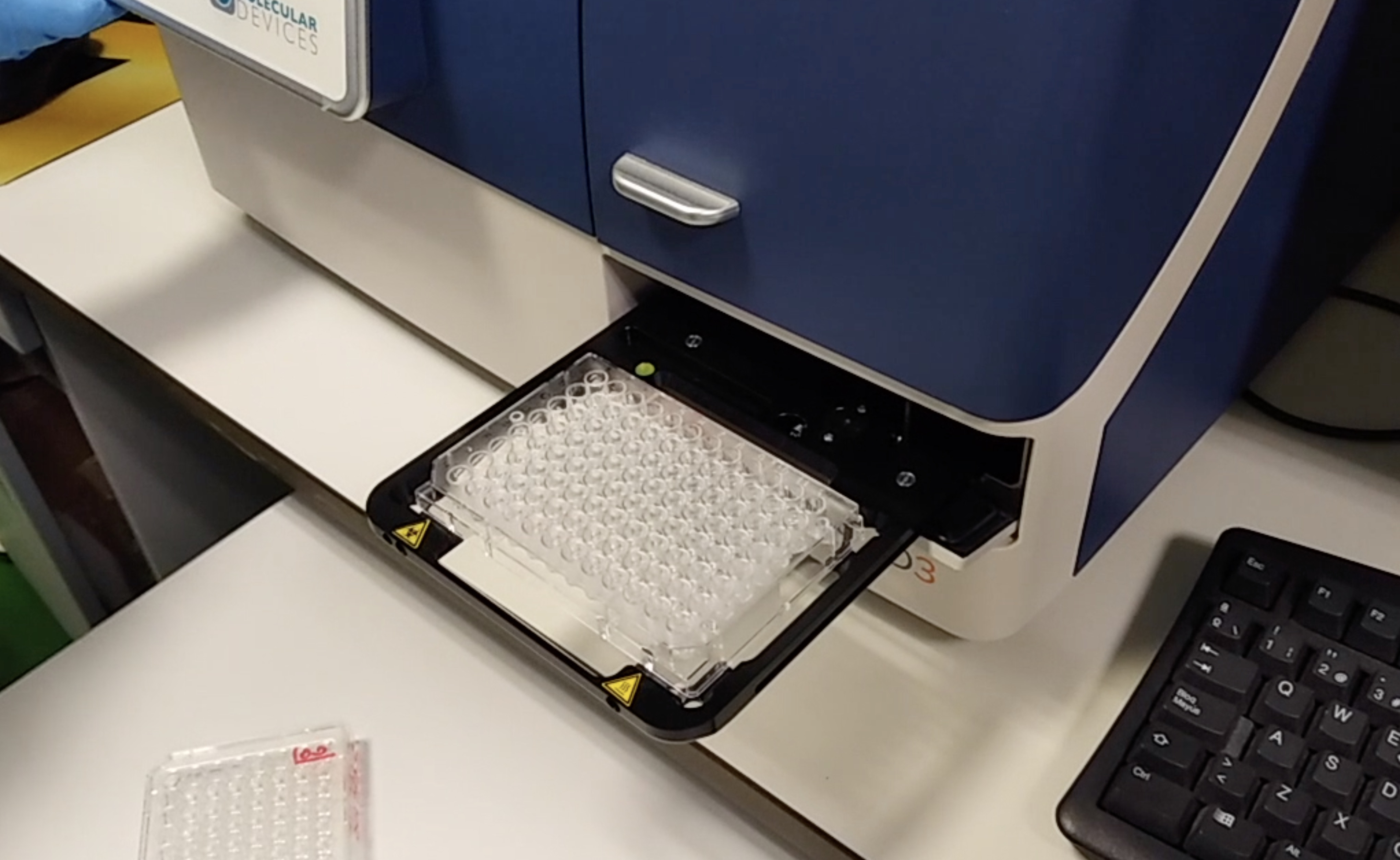 Assays for the identification of individuals seropositive for COVID-19 using recombinant antigens produced in different expression systems (bacteria, insect or mammalian cells).
Assays for the identification of individuals seropositive for COVID-19 using recombinant antigens produced in different expression systems (bacteria, insect or mammalian cells).
Researchers: Francisco Rodríguez, Hugh Reyburn, José María Casasnovas, Mar Valés, José Miguel Rodríguez Frade
As a result of the collaboration between several research groups, it has been possible to develop the production of different SARS-CoV-2 proteins and their incorporation into diagnostic tests for seropositivity. The capacity of these antigens to detect the presence of antibodies against SARS-CoV-2 in serums of convalescent patients opens the way to the development of diagnostic tests to identify different stages of immunity in SARS-CoV-2 infected individuals, a key tool for epidemiological studies, to detect the presence of neutralizing antibodies or to temporarily monitor patients’ immunity. Very important aspects in the processes of de-escalation and return to the routine.
 Immunity response characterization to control the pandemic
Immunity response characterization to control the pandemic
Researchers: Margarita del Val (CBMSO) and Isabel Mérida
Short term [3-6 months]: to determine the % of a homogeneous population, in particular children between 5-16 years old that will be immunized against the coronavirus, which will allow to estimate the vulnerability of the Spanish population to a new wave of the COVID-19 infection. Medium term [1 year]: to know the capacity of the SARS-CoV-2 virus to produce the COVID-19 disease in the population and its associated pathologies. And, based on this, to guide therapies for its treatment and the development of vaccines. /p>
 Prediction of the COVID-19 epidemic dynamics
Prediction of the COVID-19 epidemic dynamics
Researchers: Susanna Manrubia, Saúl Ares
The focus of this project is the development of tools to manage, through predictive models, the appropriate social distancing measures to contain or prevent the expansion of COVID-19. The first phase of the project focuses on the analysis of data on the evolution of the pandemic in Spain and on the development of predictive and consensual models. In a second phase, the refinement of predictive models and potentially useful reports for a future pandemic and the study of explanatory models will be tackled.
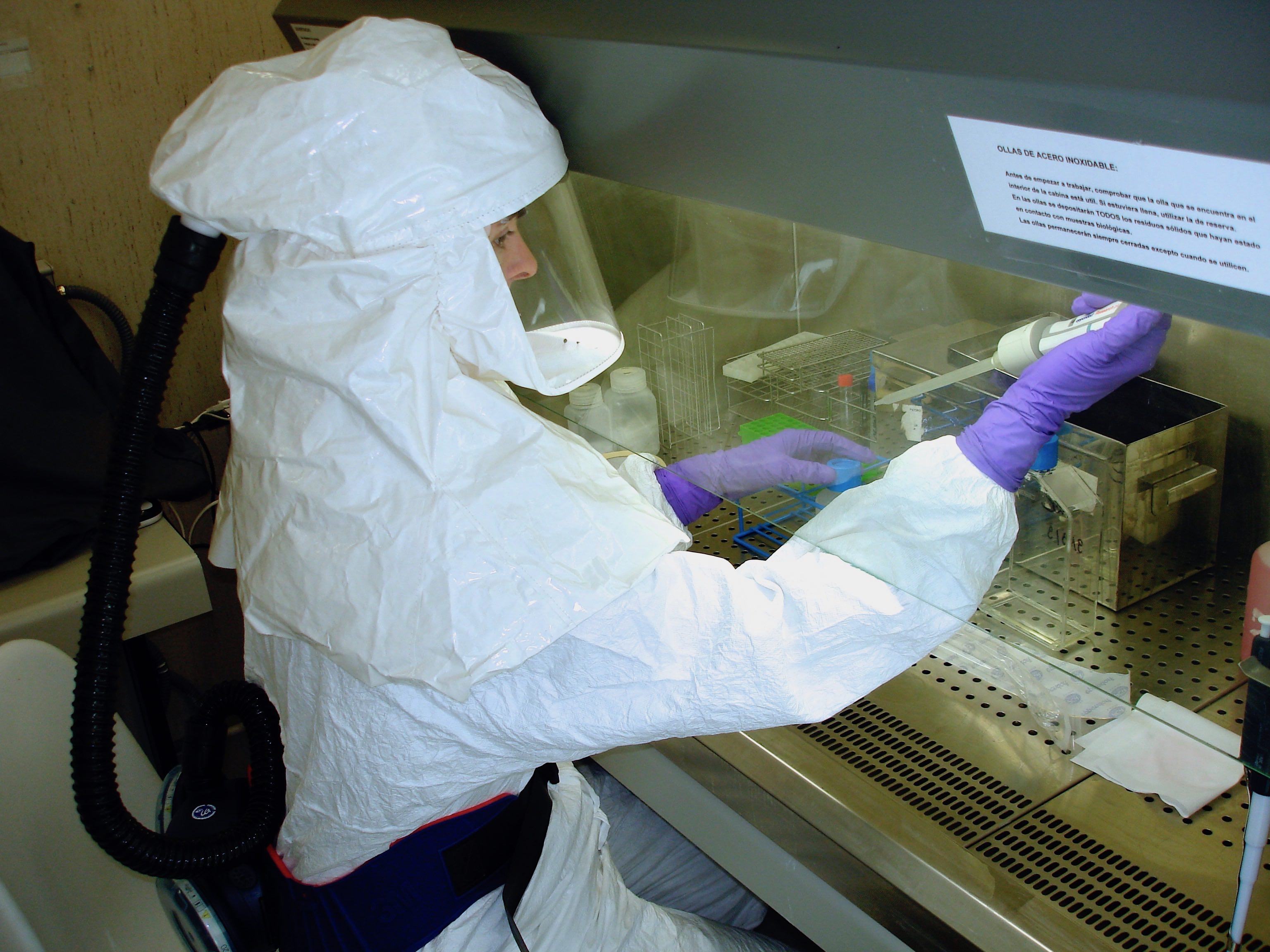 Development and experimental validation of sterilization and decontamination systems for the inactivation of SARS-CoV-2
Development and experimental validation of sterilization and decontamination systems for the inactivation of SARS-CoV-2
Researchers: Fernando Usera
The laboratory of biological containment level 3 (NCB-3) is the key infrastructure of the CNB for carrying out experiments with the SARS-CoV-2. In addition, the laboratory participates in a series of studies in collaboration with public entities and companies that aim to develop and validate sterilization and decontamination methods for the inactivation of SARS-CoV-2 in different environments and contaminated surfaces.
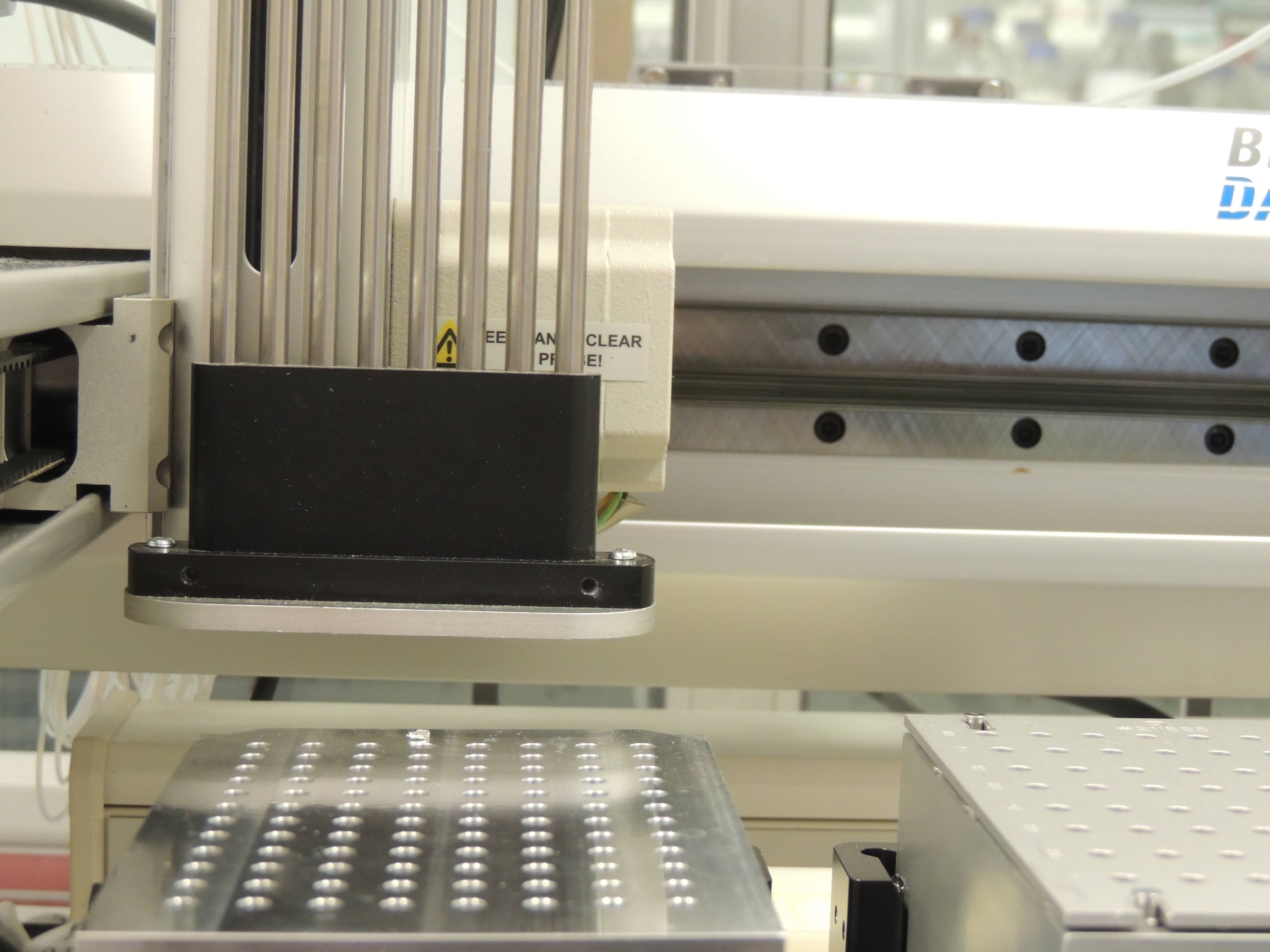 SARS-CoV-2 Proteomics
SARS-CoV-2 Proteomics
Researchers: Fernando Corrales, Alberto Paradela
To provide the basis for new diagnostic, therapeutic and vaccination strategies needed to control the present and future pandemics. Short term: Development of therapeutic molecules by facilitating quality control methods. Medium term: To define the humoral immune response of patients with COVID-19 (our body’s protective response to extracellular particles of the virus). Diagnosis and stratification of patients. Long term: To define mechanisms associated with the infection process. New diagnostic and/or therapeutic routes.
 Structural biology of SARS-CoV-2
Structural biology of SARS-CoV-2
Researchers: José María Valpuesta, José Ruiz Castón, Jaime Martín Benito, Carmen San Martín, Mark van Raaij
CWith the goal of guiding the design of antibodies, antiviral compounds and other molecular tools to combat COVID-19, X-ray crystallography, electron cryomicroscopy and correlative cryomicroscopy techniques are being used to understand the structure of the virus, its components and the infection process. In addition, work is currently underway to design chimeric viral pseudo-particles from SARS-CoV-2 antigenic regions to validate their potential to generate a protective response to SARS-CoV-2.
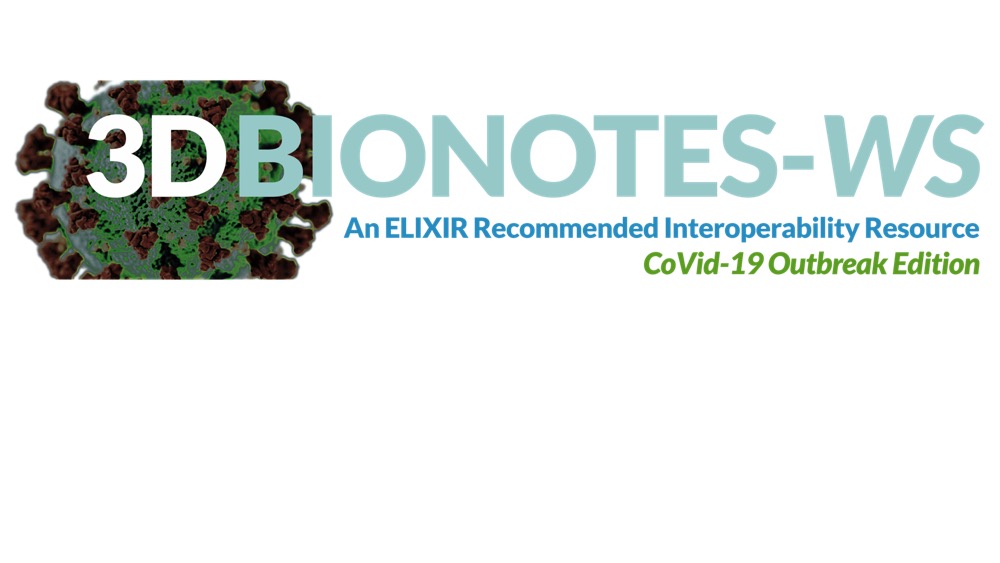 SARS-CoV-2 structure-function information node
SARS-CoV-2 structure-function information node
Researchers: José María Carazo, Carlos Óscar Sánchez-Sorzano
The aim of this project is to integrate and make available to the scientific community in the shortest time possible all the structural and biomedical information that is being generated in the world around SARS-CoV-2. In coordination with the Instituto Nacional de Bioinformática and the European infrastructures Instruct, ELIXIR y EOSC, a powerful interactive web information node called 3DBionotes is being built with the aim of being hosted on a future COVID-19 portal of the European Open Science Cloud (EOSC) initiative.
Due to the social impact of SARS-CoV2 pandemic, both CSIC and the CNB are receiving donations from differents institutions, private companies and individuals. We would like to express our gratitude to both companies and anonymous individuals for their involvement in our research.
